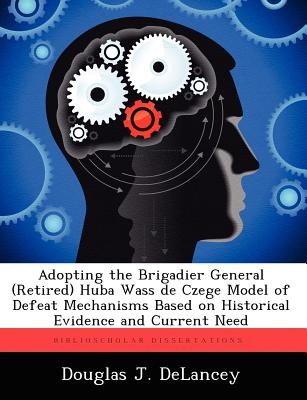
- Išsiųsime per 10–14 d.d.
- Autorius: Douglas J Delancey
- Leidėjas: BiblioScholar
- ISBN-10: 1249441056
- ISBN-13: 9781249441052
- Formatas: 18.9 x 24.6 x 0.3 cm, minkšti viršeliai
- Kalba: Anglų
- Extra -15 % nuolaida šiai knygai su kodu: ENG15
Adopting the Brigadier General (Retired) Huba Wass de Czege Model of Defeat Mechanisms Based on Historical Evidence and Current Need + nemokamas atvežimas! | knygos.lt
Atsiliepimai
Aprašymas
This monograph introduces a model of defeat mechanisms that could help establish a common, useful framework for planning. Brigadier General (Retired) Huba Wass de Czege's experience and study have shown him that three basic defeat mechanisms exist, each with a distinct historical foundation, and each with advantages and disadvantages based upon the situation they are employed. Attrition, dislocation, and disintegration are the three defeat mechanisms from his model, and they may be employed independently or in combination. Attrition emphases the physical dimension of warfare and the enemy sources of power. The destruction must take place at a higher rate than the enemy can recover. Dislocation orients on the enemy's leadership, rendering his plans and options irrelevant; rapidly changing the conditions so that the enemy cannot seize the initiative. Finally, disintegration focuses on the state of mind of enemy combatants, attacking the will of soldiers to resist-eroding the cohesion and teamwork of the enemy. These defeat mechanisms should be included in doctrinal publications that discuss planning operations. A widely understood, common terminology about how the commander desires to defeat his opponent will help planners select decisive points that achieve the commander's intent.EXTRA 15 % nuolaida su kodu: ENG15
Akcija baigiasi už 2d.17:20:31
Nuolaidos kodas galioja perkant nuo 10 €. Nuolaidos nesumuojamos.

- Autorius: Douglas J Delancey
- Leidėjas: BiblioScholar
- ISBN-10: 1249441056
- ISBN-13: 9781249441052
- Formatas: 18.9 x 24.6 x 0.3 cm, minkšti viršeliai
- Kalba: Anglų




Atsiliepimai